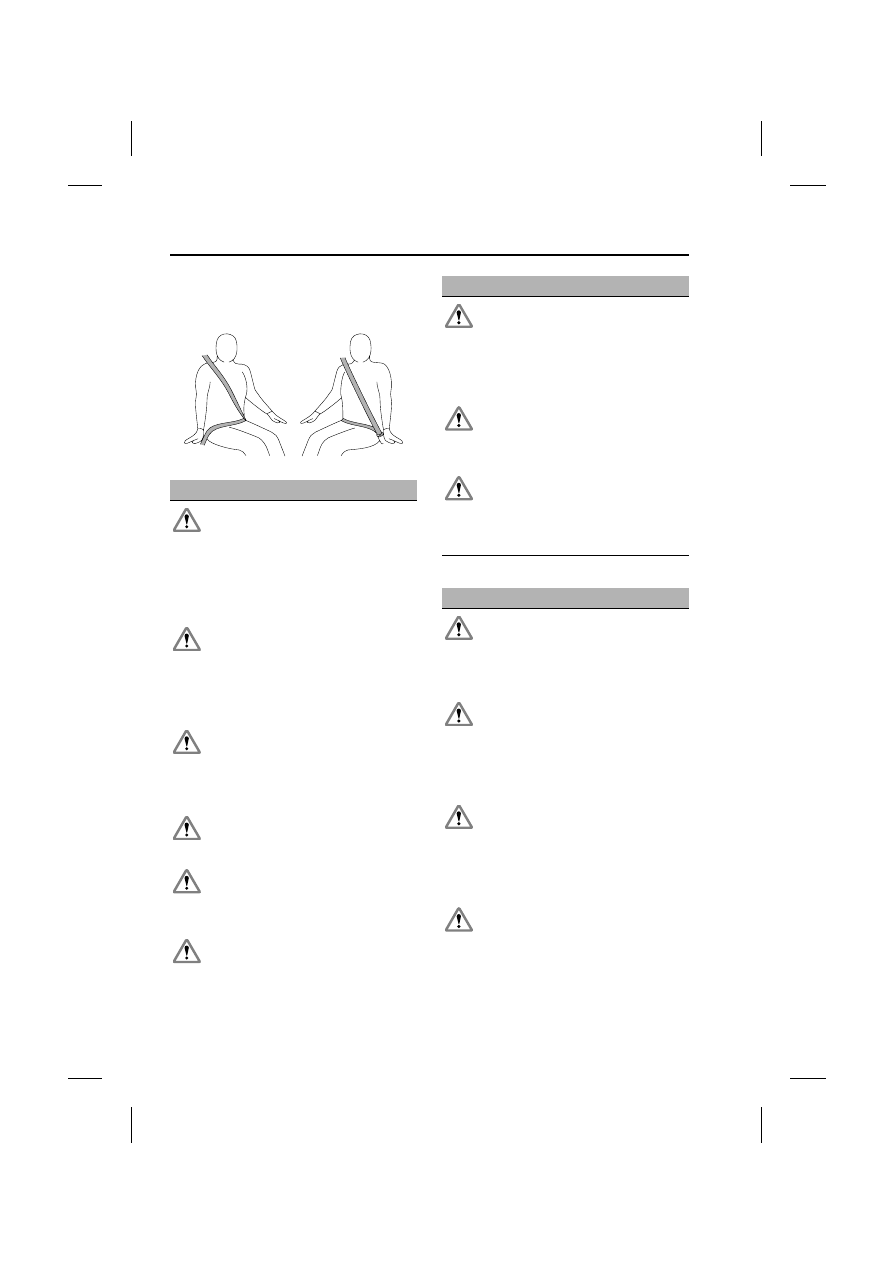Frelander 2. Manual - part 694

Seat belts
54
L
Seat belts
PRINCIPLE OF OPERATION
Seat belts
Seat belt safety
WARNINGS
Seat belts are designed to bear upon
the bony structure of the body, and
should be worn low across the front of
the pelvis, or the pelvis chest and shoulders,
as applicable; wearing the lap section of the
belt across the abdominal area must be
avoided.
Seat belts should be adjusted as firmly
as possible, consistent with comfort,
to provide the protection for which
they have been designed. A slack belt will
greatly reduce the protection afforded to the
wearer.
Care should be taken to avoid
contamination of the webbing with
polishes, oils and chemicals, and
particularly battery acid. Cleaning may safely
be carried out using mild soap and water.
The belt should be replaced if webbing
becomes frayed, contaminated or
damaged.
It is essential to replace the entire
assembly after it has been worn in a
severe impact even if damage to the
assembly is not obvious.
Belts should not be worn with the
straps twisted.
E82942
Do not carry hard, fragile, or sharp
items between your person and the
seat belt. In an impact the pressure
from the seat belt on such items can cause
them to break, which in turn may cause death
or serious injuries.
Each belt assembly must only be used
by one occupant; it is dangerous to put
a belt around a child being carried on
the occupant's lap.
The occupants of the front seats
should not travel with the seat back at
more than 30 degrees from upright.
Doing so will reduce the protection afforded by
the seat belt.
WARNINGS
Seat belts should be worn by all
vehicle occupants, for every journey
no matter how short. failure to do so
will greatly increase the risk of death or
serious injury in the event of an accident.
No modifications or additions should
be made which prevent the seat belt
mechanism from taking up slack, or
prevent the seat belt being adjusted to remove
slack. A slack seat belt offers a greatly reduced
level of occupant protection in an impact.
If any damage, wear, cuts, defects, or
impaired operation are noted with the
seat belts, the vehicle should be taken
to a Land Rover Dealer/Authorised repairer for
immediate attention. Do not use the vehicle if
the seat belts cannot be operated correctly.
When using seat belts to restrain items
other than occupants, take care to
ensure that the belts are not damaged,
or exposed to sharp edges.
WARNINGS